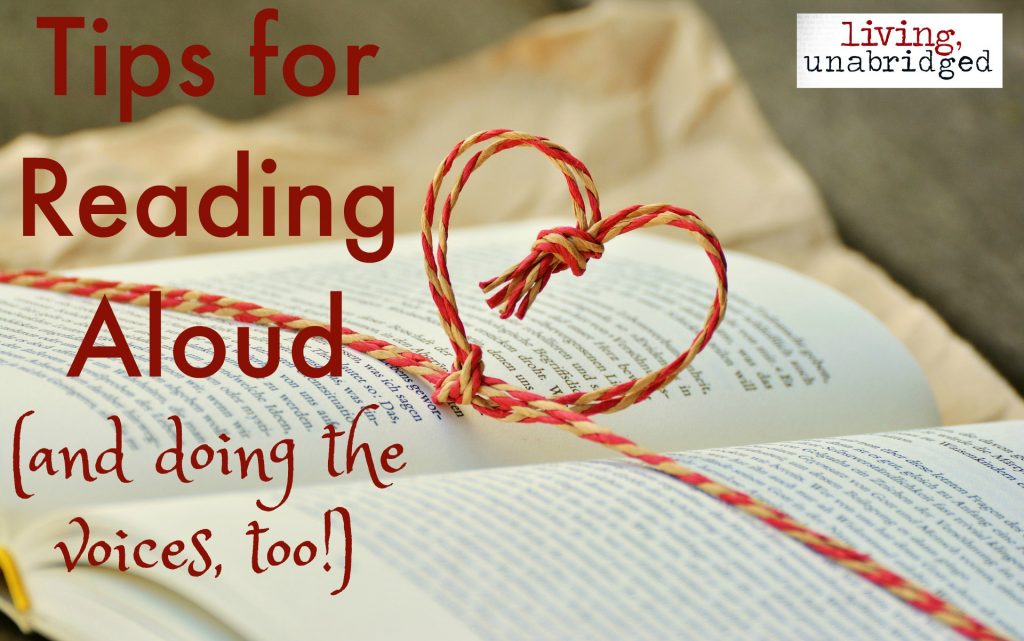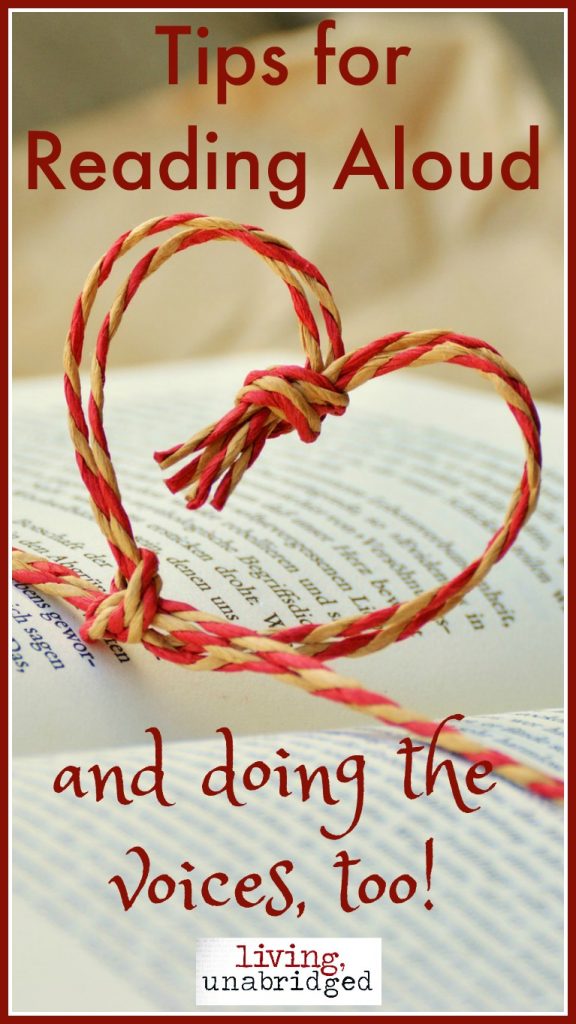My husband listened in while I read to the girls the other night. He said, "You're really hitting your reading aloud stride. We should record you and sell it."
And I said [insert laughter here].
No way, no how is that happening. That market is plenty saturated already. (You've got Audible, Lamplighter Theatre, Maestro Classics, Focus on the Family Radio Theatre, and Librivox, not to mention all the other commercially available audiobooks and playaways.)
But anyway, yes, I do happen to enjoy reading aloud. And I am certainly good enough at it for my children to appreciate, even if I'm not going to "go pro."
 Here are my top reading aloud tips:
Here are my top reading aloud tips:
1. SLOW DOWN.
People tend to talk too fast, as a general rule. The number one problem I hear when I happen to overhear other folks reading aloud is rushing through the content.
This is not a race.
I know, I know: bedtime needs to happen five minutes ago.
But it's better to take your time and clearly read two pages than rush through a chapter.
Slow down.
2. Enunciation tip #1: watch for punctuation.
This is the first thing I try to teach my children, even when they're still in the Bob Books phonics phase.
Period? Full stop.
Comma? Pause.
Semicolon? Longer pause.
Question mark? Voice goes up at the end of the phrase.
We've all heard people read without pause, as if they're going for speed reading records. Reading aloud is not a time for speed reading!
3. Enunciation tip #2: watch for consonants.
English is funny. Depending on your native accent, there may be many consonants you leave out and you might not realize that you're doing it.
So: T's, D's, K's, P's...exaggerate these. It may feel unnatural at first, but slowing down (see point #1) will help.
This also helps children with comprehension. Many words in English already sound the same, don't make it trickier by leaving out consonants.
Those are three general tips for reading aloud. What if you want to take your reading aloud to the next level and "do the voices"? (Nothing makes a story come alive like Mom or Dad changing their regular speaking voice!)
Advice for "doing" the voices when reading aloud:
1. Imitate, don't invent.
Want to know how to do a convincing accent? (Here I must admit that I'm not an actress, but I do read with expression and I've done a bit of research on this subject.)
Imitate an accent you've heard, don't invent one whole-cloth.
I'm going to give you some British examples since I read aloud so much Brit Lit.
Doing a posh British accent? Someone well to do from your favorite British movie. (Mr. Darcy or Elizabeth Bennet, anyone?)
Doing a royal character? Queen Elizabeth II. (You can listen to some of her speeches on YouTube if you need a refresher.)
Doing lower class? Well, just don't imitate Dick Van Dyke is all I can tell you.
Doing a northern voice? Think about the people in North and South or the servants in Downton Abbey ("Oh, Mr. Baaaaaates")
Anyway, those are some British examples.
There are other regions you might want to try. If so, think of someone you've heard that actually talks like that and imitate that. (There are too many regional variations in the U.S. to know them all, but it's OK to have "stock" accents, as long as you're not negatively stereotyping a specific group of people. For example: don't make all the bad guys have German accents or all the less intelligent characters sound like they're from the southern U.S.)
2. Remember your audience.
This is for your children, not public consumption, so don't worry about getting the voices exactly right. Ballpark is close enough. Your kids will love it.
I think that one reason some parents dread reading aloud is because they assume there's nothing in it for them. That shouldn't be, because this is your chance to shine. Reading aloud is a stage made for you and your audience is already primed to enjoy your efforts. How could you lose?

3. Bonus points if you sing.
There are lots of songs in children's books. Maybe do a little research first so you can sing the songs or play a recording.
The obvious example I can think of here is The Little House series. You may not be able to play fiddle like Pa, but your children may appreciate your efforts to sing the old folk songs and hymns. (If you're interested, you can find several versions of The Laura Ingalls Wilder Songbook, as well as recordings online.)
Songs that don't have suggested tunes are a little more difficult. The Pooh Bear series by A.A. Milne comes to mind. I've heard several different versions on audio versions of these, but making up your own is also acceptable!
Read aloud, anyway
I love reading aloud and I love "doing" the voices. But you know what? Even if you don't, and you don't follow much of this advice, follow this: keep reading aloud.
It covers a multitude of parental errors. Family culture and inside jokes grow based on what you choose to read. Characters in favorite books become almost like members of the family. I heard Sarah Mackenzie (of Read Aloud Revival) at the GHC and she said she wants book covers to remind her children of who they are and where they came from. Books can do that.
Read aloud (and maybe do some voices)!
(Need some ideas for what to read? Check out my list of 31 Authors Children Love for some picture book ideas.)

Books Don't Have to Be Expensive:










Someday I may need you to read to me.